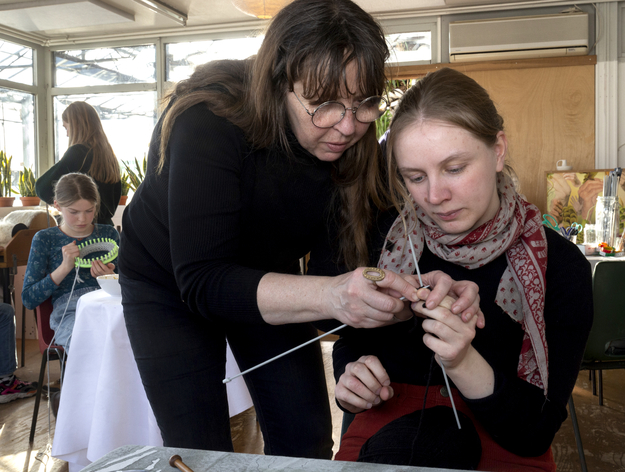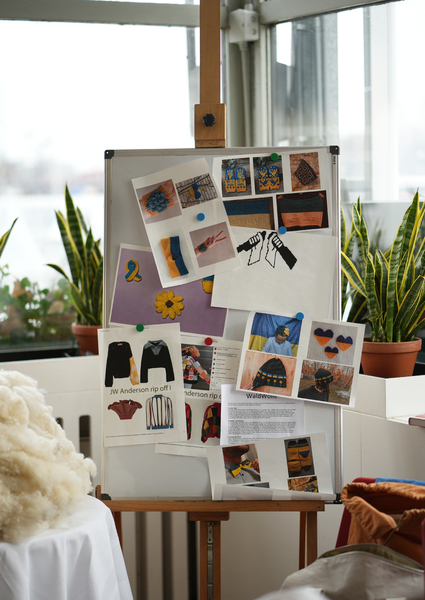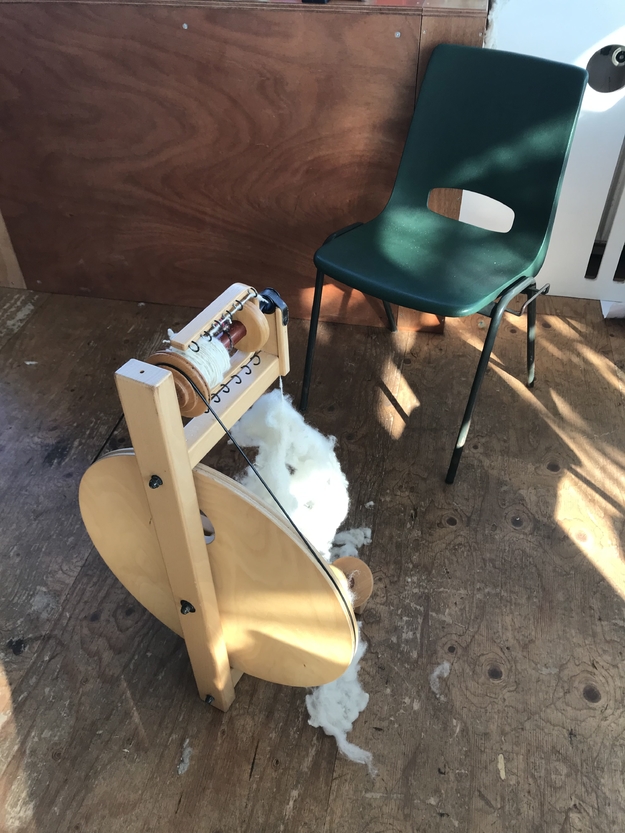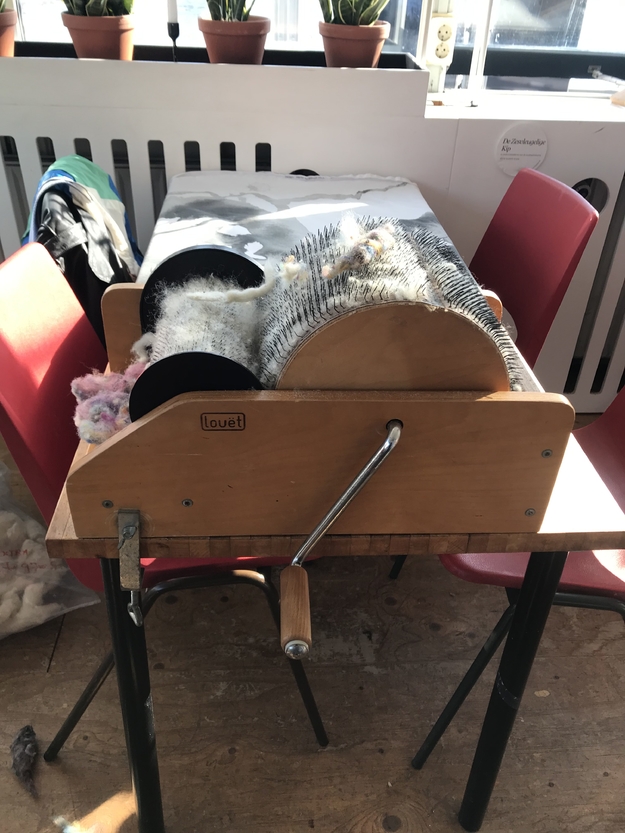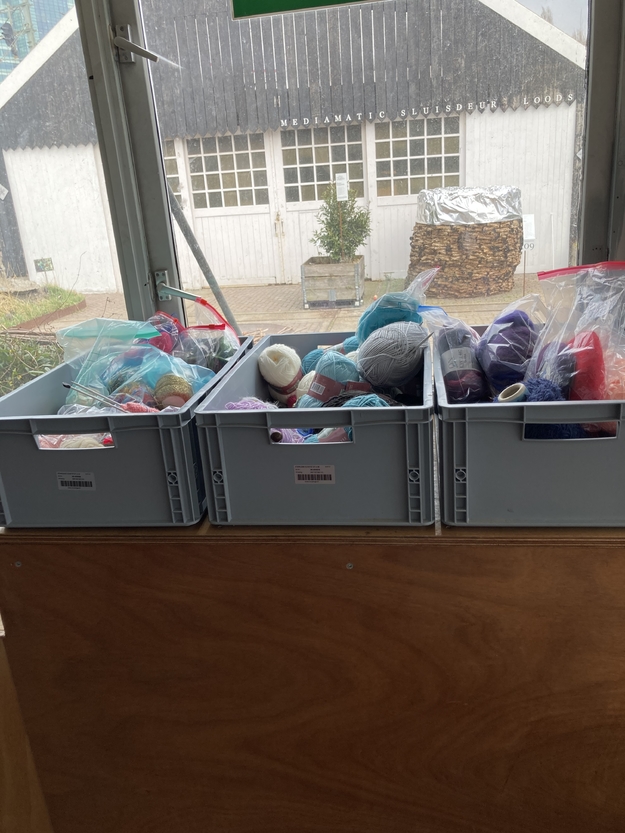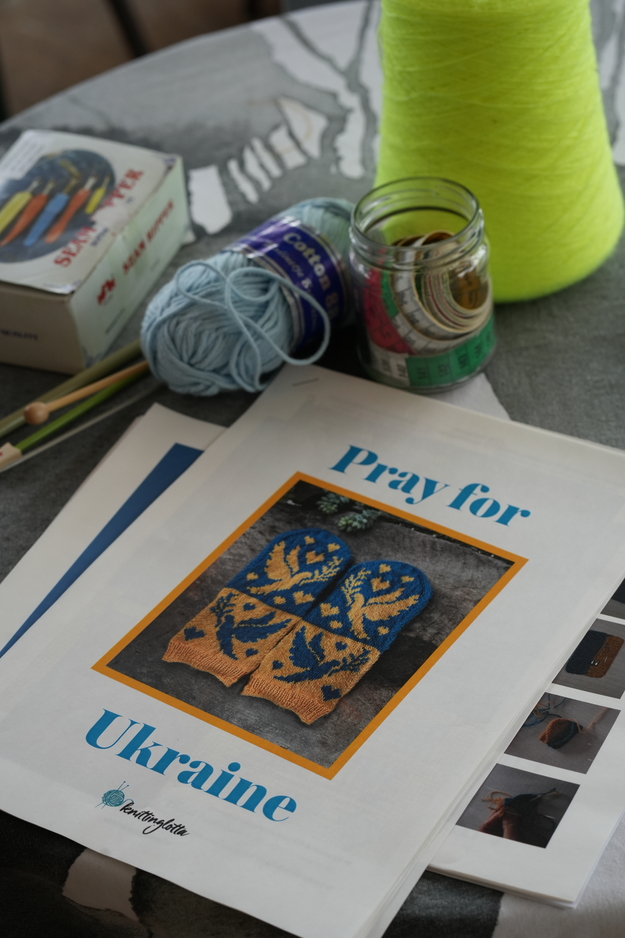General information about the workshop
Time ~5h (1h prep and cleanup + 3,5h during)
Location: Tuinkamer
Max. participants: 18-20
Tutors & contact information:
Vita Buivid: +31628478711, vitabuivid@gmail.com
Kristin Mauer: 0643030661, kristin@mediamatic.nl
Conny Groenewegen: 0624746593, cg@connygroenewegen.nl
Material checklist
For this workshop, you will need:
- threads, yarn, wool
- knitting needles
- scissors
- knitting looms
- yarn spinner
- wool spinner
- instruction flyers / inspiration material + books
All the materials can be found in the grey boxes at the Tussenkamer. The yarn spinner and the wool spinner always stay in the Tuinkamer so you can find them there already.
To-do list
A week before the workshop
Make sure the Tuinkamer will be available.
Check if all the materials are there in the grey boxes.
Check if there's enough knitting thread. In case we are running low, check in with the workshop manager to order some.
On the day of the workshop
Come in an hour before the workshop starts to set up the space.
Get the tall white table for the drinks and place it next to the door. Put a white tablecloth on it Get two jugs of water with mint from Aquaponics along with some glasses. You can also get a warm water thermos from the dry storage and some teabags for tea.
Clip the wool comber on one of the tables.
Make sure there's 4 rectangle tables (2 small and 2 big ones) as well as a round table (like the ones that are in the Haeckel room). The 4 rectangles can go in each corner of the room and the round one can be in the middle next to the grey pole. The tables should have the grey and white tablecloths on. You can find clean ones in the dry storage.
There should already be a round table, the yarn spinner, the wool spinner and a board in the corner. These always stay there so you do not have to move them.
Lay out the grey boxes with the thread on the stairs in front of the window and take out also the jars with the rest of the equipment (needles, hoops, scissors etc). These can be spread around in each table or you can put them all in the round table that's in the middle.
Put some knitting materials and flyers on each table to make the setup cozy and inviting.
During the workshop
Welcome participants. No need to scan tickets since this is a free workshop.
Offer tea. You can also offer coffee to the tutors
Participants can come and go during the workshop so new people may join later on.
Make sure you're available if the instructors need something.
Timeline of the workshop
|
In the week before |
Check space and materials. |
| Day of the workshop | |
| 13:00 | Set up |
| 14:00 | Start of workshop |
| 17:30 | End of workshop |
| 17:30-18:00 | Clean-up |
|
After the workshop |
Clean-up. Make sure the space is clean and ready to be used by the restaurant. That involves taking all dirty cups to the bar, checking if the tablecloths are clean, arranging chairs and tables neatly etc. Put all the grey boxes with materials and the tall white table in the Tussenkamer (middle room). The heavier equipment (the two machines) can stay in the corner of the room along with the white board. |
